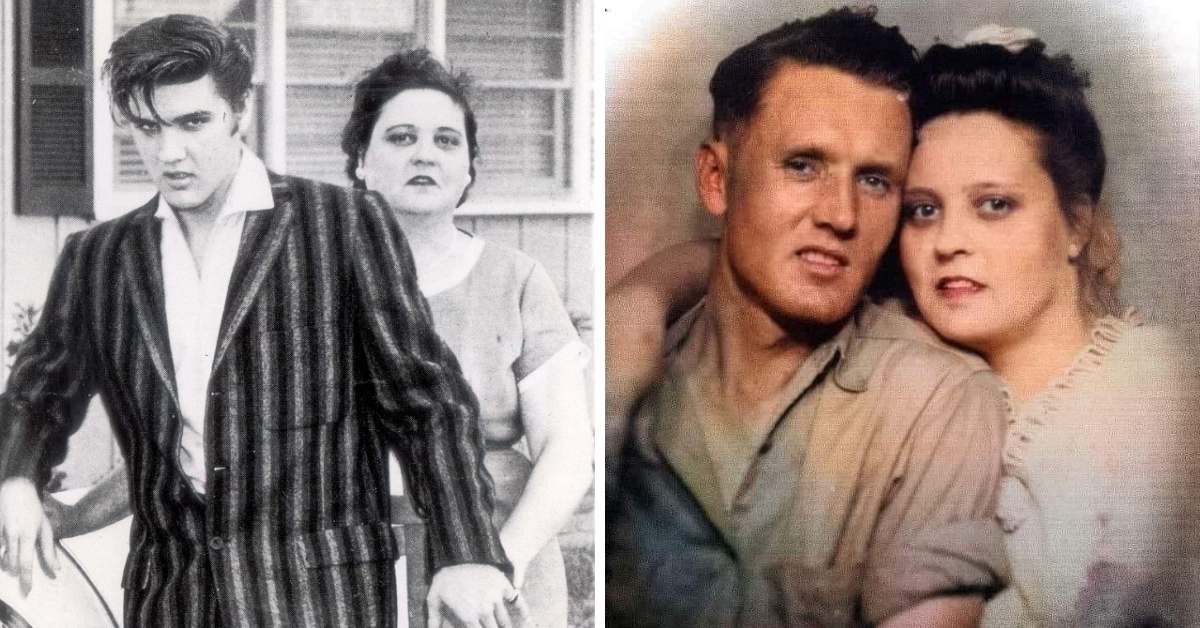Elvis Presley, known as the “King of Rock and Roll,” had a very special bond with his mother, Gladys. She played a big role in his early years, nurturing his love for music and supporting his dream to become a singer.
Sadly, Gladys passed away when she was still quite young, which was a heartbreaking event for the Presley family. In this explanation, we’ll explore the details of how Gladys Presley passed away and how it deeply affected Elvis and his family.
Elvis Presley passed away 19 years after his mother, Gladys Love, was laid to rest. Gladys was very protective of Elvis, and their closeness was remarkable.
She became even more protective after realizing that having more children might be difficult. Elvis’s father, Vernon, once said that Elvis hardly left the house until he was 17. The three of them created their own special world.
Losing the woman he called “my best girl” was something Elvis never fully recovered from. When he heard about Gladys’s passing, he said, “She was everything we lived for. It left me heartbroken. She was my best friend forever.”
How Did Elvis Mom Die?
Gladys Presley, Elvis Presley’s mother, became ill in August 1958. Elvis was serving in the US Army in Germany at the time, but he returned home to be with her.
Gladys Presley died tragically on August 14, 1958. She died while she was pretty young. Her death was caused by a heart attack, and it was later discovered that alcohol had also played a role.
The loss of Elvis Presley’s mother had a profound effect on him. He stated, “It crushed my heart.” He had difficulty walking after her funeral and was quite depressed.
People who knew him well stated he was never the same after his mother died. Elvis died almost 19 years later, on August 16, 1977. He was laid to rest next to his parents at his Graceland mansion.
Good morning, E fam!! Elvis felt about his mom, the same way I felt about my dad. He was my rock, and died when I was just starting adulthood. I wasn’t ready for him to die.🥺 But, anyway, I hope everyone has a wonderful Saturday. I’ll be at my daughter’s track meet today. #TCB pic.twitter.com/0dSiNOlQf2
— Lynette Rizzo/saw Elvis x 19 (@lynette_rizzo) March 11, 2023
Check out some other new content we’ve published:
Elvis’ Mom and Her Struggles
Elvis Presley grew up in a family with not much money, so when he became famous and wealthy, he wanted to give his mom, Gladys, a better life. He moved her to a big house called Graceland and even got her a fancy pink car. But his mom didn’t like all the money.
Her friend Lilian said, “After Elvis got famous, Gladys wasn’t happy anymore. She never found peace.” Once, a friend came to visit at Graceland when Elvis was away on tour and said to Gladys, “You must be the happiest woman in the world!” But Gladys replied, “You’re wrong. I’m the happiest woman on the planet. I’m careful with money. I can’t buy groceries without worrying about my neighbor’s child getting into drugs and alcohol because of being rich and worried that my only son might have trouble.”

Gladys needed medicine to sleep, coffee to wake up, and she started drinking more and more vodka to deal with life.
Elvis joined the army, which made Gladys very sad. She begged him not to go because she remembered how her cousin went crazy and hurt people in Korea. But Elvis felt like he had to go.
In August 1958, Elvis got a call telling him his mom had passed away. The army gave him a seven-day break to visit her. Luckily, he made it home in time. His mom died because her heart stopped, and her liver was very sick because she drank too much alcohol.
Elvis Was Heartbroken
Elvis was very, very sad after his mom died. His cousin Billy Smith said, “Elvis cried a lot. It was really hard for him.” Elvis leaned over his mom’s box and didn’t want to let go. He said goodbye as she was lowered into her grave, saying, “Goodbye, dear.”
Elvis was really, really sad. He kept on crying and hugging his cousin for a long time in the front hall of Graceland. It was the saddest thing his cousin had ever seen.
Contents


